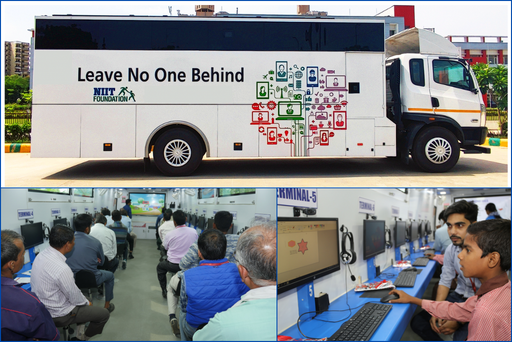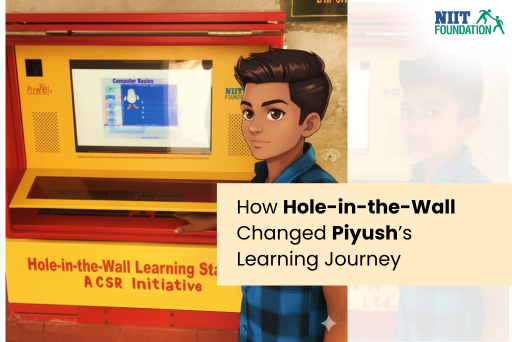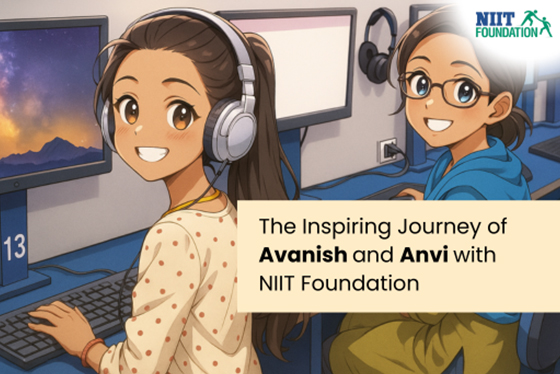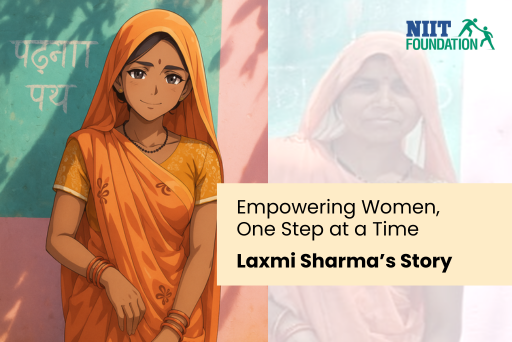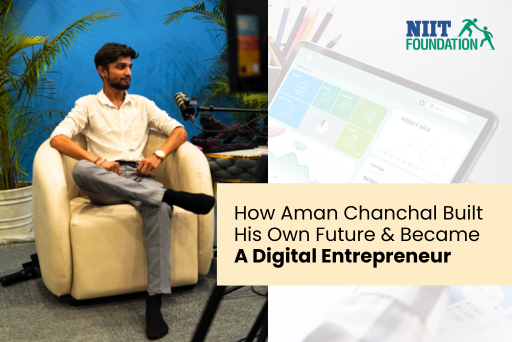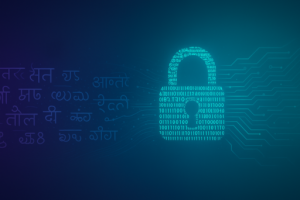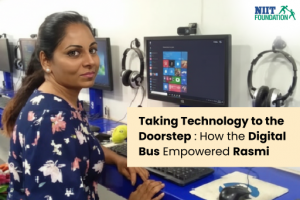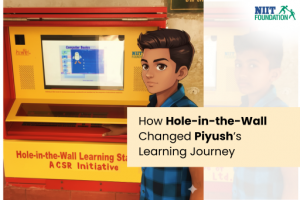Imagine a world where even the remotest areas of rural India are no longer left behind in the digital age. Thanks to initiatives like Digital Buses, an ingenious effort by the NIIT Foundation, this vision is becoming a reality. In this blog, we’ll explore how these Digital Buses are empowering rural communities, enabling them to become tech-savvy and fostering rural development.
Digital Literacy in Rural India: A Game-Changer
In the modern era, being tech-savvy is a game-changer. It means having the knowledge and skills to use technology effectively. In India, tech-savviness is no longer confined to urban areas; it’s spreading its wings in rural communities too. The transition toward digital development has opened up new doors for the rural population.
The Significance of Rural Development
Rural areas in India have often grappled with poverty and high unemployment rates. Rural development is the key to uplifting the living standards of those residing in these areas. It provides opportunities for employment, quality education, and a chance at economic independence. It’s a way to strengthen society and, in turn, boost the nation’s economy.
Digital Education: Bridging the Divide
Digital education is a powerful tool in bridging the digital divide. It offers rural youth and people of all ages access to the digital world. As technology becomes an integral part of our lives, it’s essential for everyone to be tech-savvy.
The Role of Digital Buses in Rural Transformation
One shining example of this transformation is the Digital Bus initiative by the NIIT Foundation, also known as the Digital Transformation Van (DTV) and Digi Bus in certain locations. This innovative project has not only empowered rural youth with digital skills but has also provided valuable training to older generations.
Supporting the Skill India Scheme
The Digital Bus initiative aligns with the Indian government’s Skill India scheme launched in 2015. This scheme is designed to provide industry-related job training and contribute to the overall progress of the nation. Digital Buses are an integral part of this journey, helping rural communities gain essential digital skills.
Reaching the Unreachable
The Digital Bus acts as a lifeline, reaching those who are otherwise inaccessible. It brings education and skills to people of all ages, particularly those with limited exposure to technology. This project targets areas where trainers and classes are scarce, and digital literacy rates are low. It’s a solution for women and girls who were previously unable to leave their communities to study.
In essence, these Digital Buses are transforming rural India, making it tech-savvy and resilient. They are bridging the gap between rural and urban areas and opening doors to opportunities that were once out of reach. As we continue on this path of digital development, we are not only shaping the future of rural India but also contributing to the progress of the entire nation.

